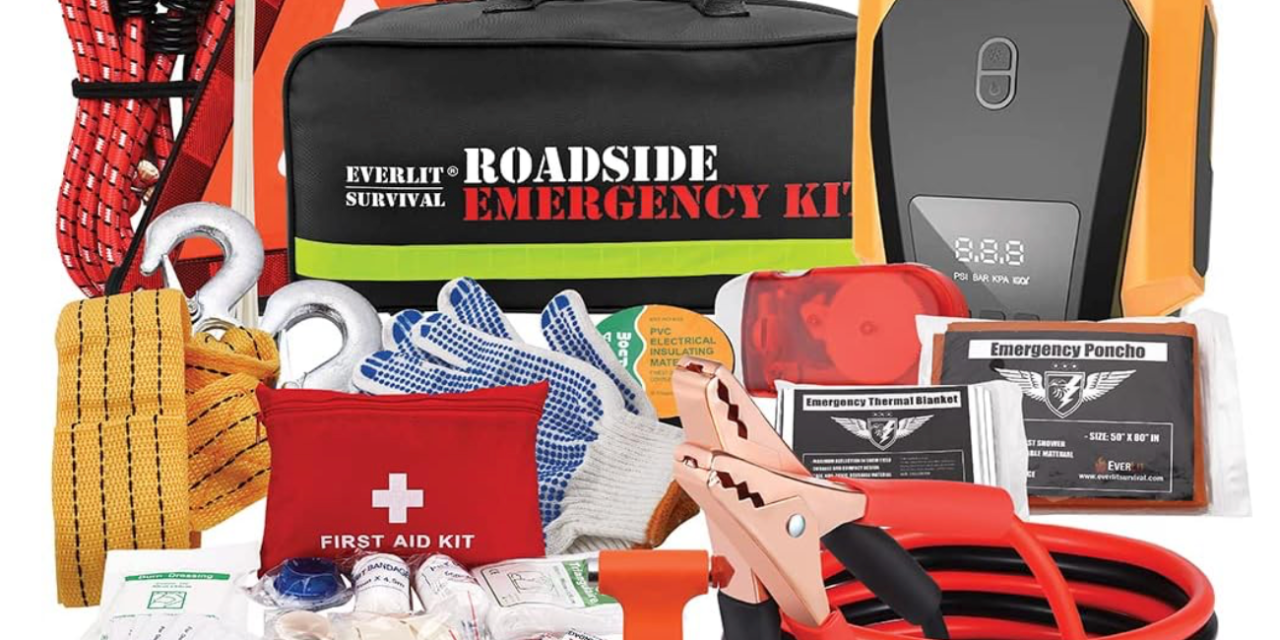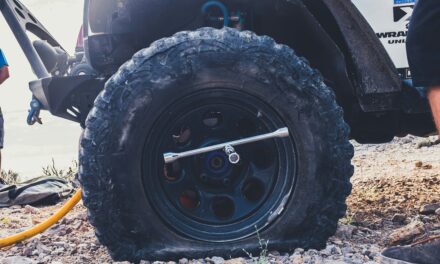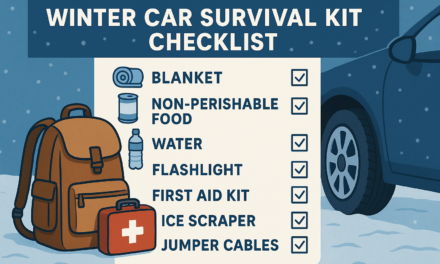Whether you commute daily, take long road trips, or live in an area prone to severe weather, having an emergency car prep kit can make all the difference in a roadside crisis. A well-prepared kit keeps you safe, comfortable, and self-sufficient until help arrives—or until you can get back on the road.
From flat tires to winter snowstorms, roadside emergencies happen when we least expect them. This guide will walk you through the essential items to pack, how to store them, and tips for keeping your kit ready year-round.
Why You Need an Emergency Car Prep Kit
Cars are reliable—until they’re not. Mechanical breakdowns, accidents, and extreme weather can leave you stranded for hours. Cell service may be unreliable in remote areas, and help might take time to arrive.
A car emergency kit helps you:
- Stay safe while waiting for assistance
- Handle minor repairs
- Keep warm or cool depending on the season
- Maintain communication
- Provide first aid if needed
Essential Categories for Your Emergency Car Prep Kit
1. First Aid Supplies
Even a minor roadside incident can cause injuries. A stocked first aid kit should include:
- Adhesive bandages
- Antiseptic wipes
- Gauze pads and tape
- Tweezers and scissors
- Pain relievers
- Emergency blanket
- Disposable gloves
Pro Tip: Consider a trauma kit with a tourniquet and burn gel for more serious situations.
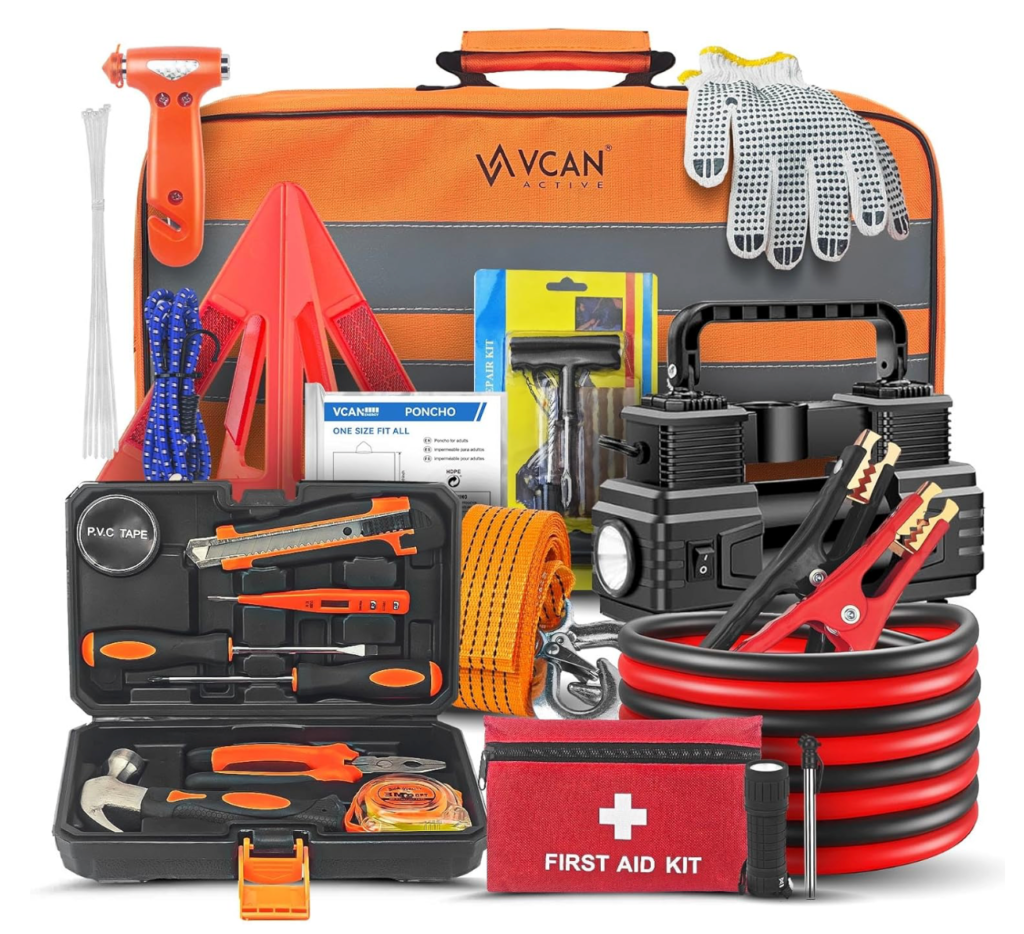
2. Roadside Repair Tools
You don’t need to be a mechanic, but having the right tools can help you fix minor problems.
- Jumper cables or a lithium jump starter
- Tire pressure gauge
- Lug wrench
- Jack
- Duct tape
- Multi-tool
- Spare fuses
3. Tire Repair & Inflation
Flat tires are one of the most common roadside issues.
- Full-size spare tire (check air pressure regularly)
- Tire sealant or plug kit
- Portable air compressor (12V)
4. Lighting & Visibility
If your car breaks down at night, visibility is critical.
- LED flashlight or headlamp
- Reflective triangles
- High-visibility safety vest
- Road flares or LED flare lights
5. Seasonal Gear
Tailor your kit to your climate.
For Winter:
- Ice scraper and snow brush
- Shovel
- Traction aids (sand, kitty litter, or tire traction boards)
- Extra warm clothing, hats, gloves
For Summer:
- Extra drinking water
- Sun hat and sunscreen
- Cooling towel
6. Personal Safety & Comfort Items
Staying comfortable helps you think clearly in stressful situations.
- Bottled water (rotate every 6–12 months)
- Non-perishable snacks (energy bars, nuts)
- Poncho or rain gear
- Blanket or sleeping bag
- Work gloves
- Phone charger (USB and portable power bank)
7. Emergency Communication
When you’re out of cell range, information is critical.
- Hand-crank or battery-powered NOAA weather radio
- Whistle for signaling
- Pre-written emergency contact list
8. Important Documents
Keep copies in a waterproof pouch:
- Registration and insurance papers
- Roadside assistance membership card
- Emergency medical information
How to Store Your Emergency Car Prep Kit
- Choose a Durable Container: Use a heavy-duty tote, backpack, or storage bin to keep items organized.
- Keep It Accessible: Store in the trunk or cargo area but ensure quick access.
- Check It Regularly: Rotate food, water, and batteries every 6 months. Test electronics periodically.
- Adjust for the Season: Swap winter gear for summer items as the weather changes.
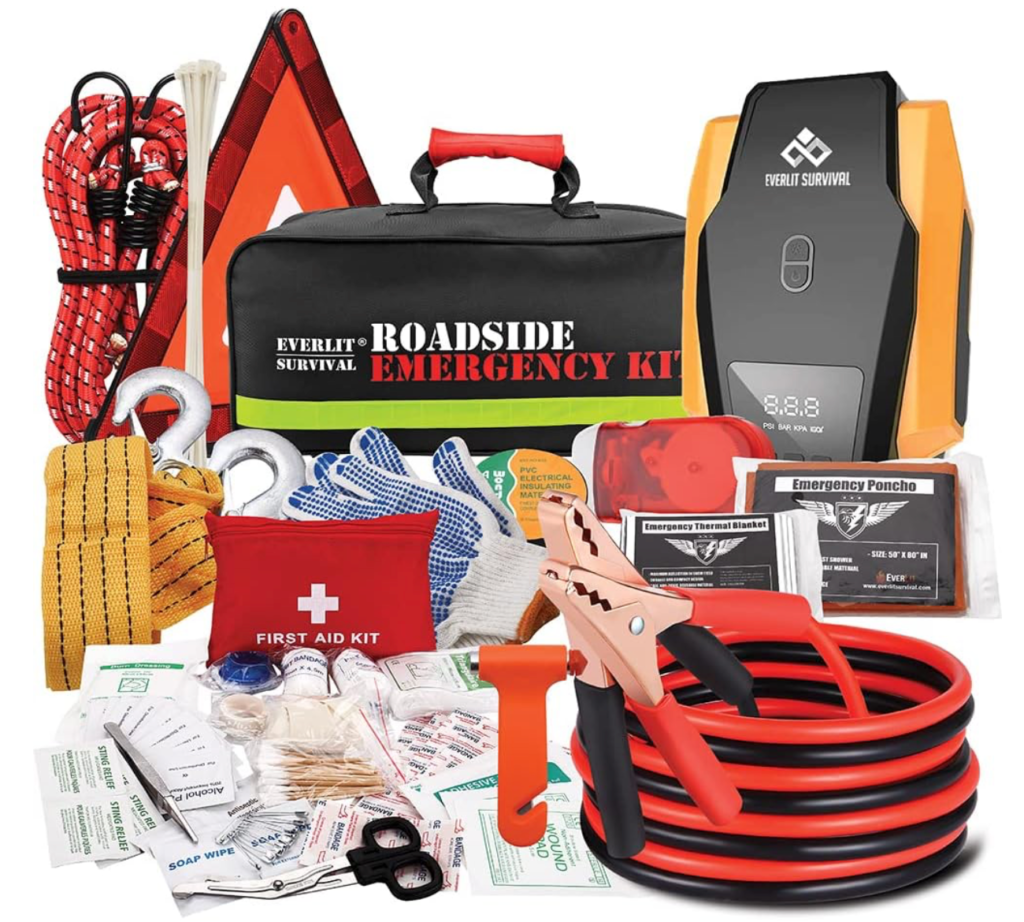
Quick Checklist: Emergency Car Prep Kit
- First aid kit
- Jumper cables or jump starter
- Tire repair kit & air compressor
- Spare tire & jack
- Flashlight & extra batteries
- Reflective triangles
- Road flares or LED lights
- Multi-tool
- Work gloves
- Bottled water & snacks
- Blanket or sleeping bag
- Poncho or rain gear
- Ice scraper (winter)
- Shovel (winter)
- Traction aids
- Phone charger & power bank
- Important documents
Bonus Tips for Roadside Safety
- Stay Visible: Turn on hazard lights immediately when you stop.
- Stay in the Vehicle if Unsafe: If you’re on a busy highway, it’s safer to remain inside with seatbelts fastened until help arrives.
- Use Roadside Assistance Apps: Many insurance companies offer tracking so you can see when help is on the way.
- Know Your Vehicle: Review your owner’s manual so you’re familiar with changing a tire, jump-starting, and other basic tasks.
Final Thoughts
An emergency car prep kit is more than just a convenience—it’s a safety net. It can help you handle unexpected breakdowns, survive severe weather, and protect yourself and your passengers. Building your kit now ensures that when trouble strikes, you’re ready to face it calmly and confidently.
Don’t wait until you’re stranded on the side of the road. Start gathering your emergency car gear today, customize it for your needs and climate, and check it regularly. Your future self—and your passengers—will thank you.

